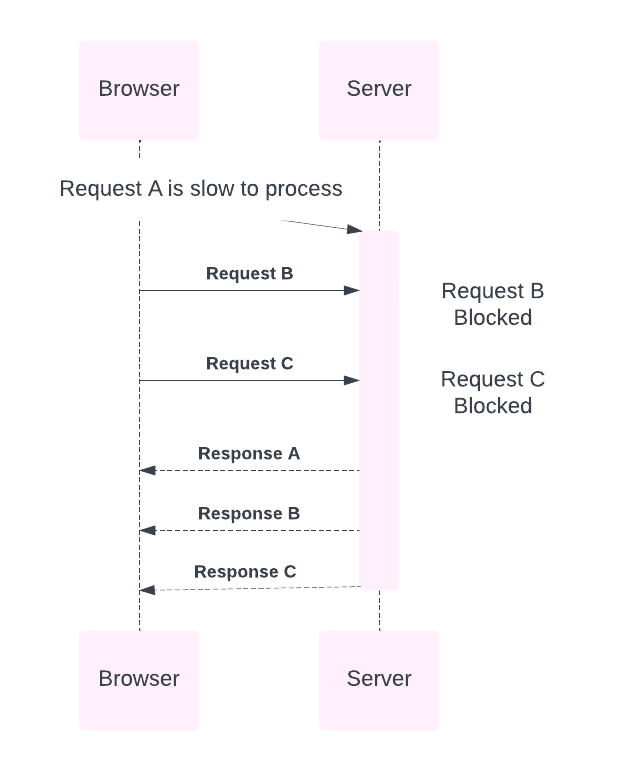Unclogging the Pipeline: How HTTP 2 and 3 Tackle Head-of-Line Blocking
Ever felt like your web pages take forever to load, even though your internet speed seems fine? This slowdown can be attributed to a phenomenon called head-of-line (HOL) blocking. Let's delve into what HOL blocking is and how HTTP 2 and 3 address this performance bottleneck.
What is Head-of-Line Blocking?
Imagine a queue where people are waiting to be served. HOL blocking occurs when the entire line gets stuck because the person at the front is taking a long time. In the context of web browsing, HOL blocking happens when a request is delayed or lost, causing all subsequent requests on the same connection to wait.
This was a major issue with HTTP 1.1, the previous version of the Hypertext Transfer Protocol. While HTTP 1.1 introduced pipelining, which allowed sending multiple requests at once, it suffered from severe HOL blocking. If one request in the pipeline ran into trouble, everything behind it would grind to a halt.
HTTP 2 to the Rescue: Introducing Multiplexing
HTTP 2 brought a significant improvement by introducing multiplexing. This allows for multiple requests and responses to travel on a single TCP connection, without waiting for each other to complete. Think of it as having separate lanes for different requests in the same queue. Even if one lane gets blocked, traffic in other lanes can still flow freely.
However, HTTP 2 doesn't completely eliminate HOL blocking. Here's why:
TCP layer HOL blocking: HTTP 2 relies on the underlying TCP protocol, which itself can experience HOL blocking. If a single packet in the TCP stream gets lost, all streams using that connection have to wait for it to be retransmitted.
HTTP 3: Taking it a Step Further with QUIC
HTTP 3 builds upon HTTP 2's foundation and introduces QUIC (Quick UDP Internet Connections) as the transport protocol. QUIC operates on top of UDP, a connectionless protocol unlike TCP. This means each stream in HTTP 3 acts independently. If a packet for one stream is lost, it only affects that specific stream, not the others. This eliminates HOL blocking at the transport layer, leading to significant performance improvements.
In Conclusion
Head-of-line blocking has been a major hurdle in achieving optimal web browsing speeds. HTTP 2 introduced multiplexing, which significantly reduced HOL blocking within the application layer. HTTP 3, by leveraging QUIC, tackles HOL blocking at the transport layer as well. These advancements in HTTP protocols pave the way for faster, smoother, and more responsive web experiences.




